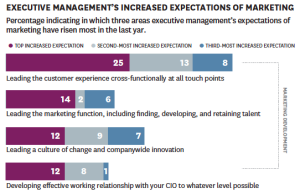by scott.gillum | Jun 16, 2016 | 2016, Sales
I’m a “binger.” I’m “all in” when it comes to consuming content and I’m not alone. Netflix reports that of it’s 40 million US subscribers, over 60% report being “binge watchers.” We also know that our personal habits influence our professional habits, so could there be a group of “binge buyers” who are currently being underserved with our content efforts, and could that be hurting our sales efforts?

For example, I’m working with a client to help them “digitalize” the organization. As part of the effort, I’m evaluating software tools to help improve the performance of their content marketing efforts. So I’ve been binging on vendor content, going deep into their sites and watching hours of video to evaluate their fit for our client’s needs. However, one of the vendor’s limited the information on their site forcing me to request a demo to learn more about their tool.
Ten days after I requested the demo the vendor finally reached out to me. It then took another 3 days to align our schedules. The day of the “demo” was disappointing. I didn’t get to see the tool, but instead I got a 10 page powerpoint pitch. Running out of time that day forced me to set up yet another call more than a week away. Needless to say, they didn’t make the short list of vendors to consider.
Here’s the point we know from CEB, Sirius Decision, and Forrester decision makers are more than half the way through the buying process before they engage a sales person. If you are an organization that is trying to insert a sales person in upstream, you run the risk of slowing the buying process and/or being eliminated from it.Your prospects maybe “bingers” like me. Let them go deep and gather all of the information they need on their own. It will accelerate your sales cycles, increase lead volume, and lower the cost to sell. I know it will set off alarms with your lead tracking process, but the fact is, buyers control the process and they will let you know when they need to talk to someone.
Still skeptical? Atlassian, an open source provider of project management and app software sold over $300 million in enterprise software without a single sales person. The keys to their success: a great product, word of mouth and letting buyers sell themselves. “Customers don’t want to call a salesperson if they don’t have to,” says Scott Farquhar, Atlassian’s co-chief executive officer.
“They much rather be able to find the answers on the website.”
Don’t get me wrong. I believe sales people can serve a very valuable role for the buyer, and for organizations. But that role has shifted, instead of being the product “spokes person” they should now focus on better understanding what information buyers need to drive a consensus on a decision within their organization.
Unsatisfied with my first call with the rep that left me without seeing the tool, I found a product demo video on Vimeo. I doubt they even knew it existed, so by second call, I was already well versed on the tool. I knew how it differed from the other tools being evaluated, but what I didn’t know was why my client would need that functionality. That is where the sales person could have been helpful, and could of earned themselves a shot at the sale. The lesson; bingers are out there and growing, if you throttle bandwidth on content you could be limiting, or in this case, eliminating opportunity.
by scott.gillum | May 17, 2016 | 2016, Marketing
 One morning a couple of months ago I got in the car and my phone said travel time to my office 20 minutes and traffic was normal. A new feature of iOS9 is the ability for Apple Maps to detect when you enter your car by syncing with Bluetooth. I didn’t find it invasion, in fact, living in one of the worst cities in the country for traffic, I welcomed the information.
One morning a couple of months ago I got in the car and my phone said travel time to my office 20 minutes and traffic was normal. A new feature of iOS9 is the ability for Apple Maps to detect when you enter your car by syncing with Bluetooth. I didn’t find it invasion, in fact, living in one of the worst cities in the country for traffic, I welcomed the information.
Now that I’ve had a taste of IoT and “things connecting to things” I want more, and it’s given me a glimpse of what the future of mobile advertising might look like. Ads will go from being disruptive to being useful, perhaps even helpful. Mobile devices will become your digital doppelgänger signaling to other devices your presence, preferences and patterns.
For example, I’m on my way to LA for a meeting. My United app holds my flight itinerary, terminal and gate, Google/Apple Maps knows my current location, and my Starbucks app knows my buying behavior. My phone holds my intent, location and past purchasing history that could trigger opportunities to give me promotional messages as I journey to my gate.
Given the early morning departure, I’m in desperate need of coffee. The wall-mounted screens on the “people mover” (in the future) could flash me offer as I pass, inviting me to stop at a convenient store location by my gate. In this new world, my order would be ready and waiting for me when I arrived. Being between two locations, and missing the closest one, I would of appreciate this information as I have no time to backtrack.
Here’s the point — we are quickly moving to the ultimate marketing goal of getting the right message, to the right person, at the right time, and in the right place. But to enable this future, which will be data driven and permission based, the challenge for marketers is — how do we enbable it and/or keep from screwing it up?
Here are four things to consider:
- Retargeting – we have to stop being “creepy” by being better at targeting and knowing when to turn the “switch off.” Enough said on this topic, I think we all know the issues. Trying to be “personal” without having a relationship will get you into trouble.
- Overemphasizing Acquisition – IAB reported that digital advertising increased by 20%, and mobile by 66%, in 2015. Yes, there are certain elements of digital that deserve the investment, but attribution issues still exist. Take a hard look at your revenue mix and understand the most productive lead sources. Place your bets on improving conversion metrics, not just increasing volume. Don’t create a bunch of unnecessary noise at the top of the funnel.
- Undervaluing Upsell, Cross Sell and Renewal – With a future built on “permissions” existing relationships are the perfect starting point. Invest in helping customers become better consumers by thinking for them. Reposition marketing activities from being interruptive to being helpful, innovative and informative. Proactively reach out to them with offers based on their behaviors, focusing on how it will help them in their role, and not necessarily how it directly benefits your organization. Trust me, it will come back to you.
- Scrutinize Technology Investments – ChiefMarTech estimates that there are now over 3500 MarTech providers. It’s a “killing field” as Larry Ellison once described it. Over the next 2-3 years companies will either 1) run out of money, 2) merge or 3) be acquired. Carefully consider and select partners that will help build new mobile platforms, capabilities and tracking. Invest the time to get to know their business/funding model, existing customer base, and account team.
In the near future, highly personalized ads will spawn in real time based on consumer’s intent and location… and they won’t just appear on devices. Let’s hope that point arrives soon. I really could of used that Grande Dark for the plane ride. Airline coffee may say it’s Starbucks, but it really doesn’t taste the same.
by scott.gillum | Mar 31, 2016 | 2016, Marketing
Organizations are spending millions of dollars to “digitalize” themselves, as a way to become more agile and responsive to customer needs. As Gartner says, “Companies should be able to ‘react at Internet speed’ with real-time analytics to better understand individual buyers, and how to serve their unique needs.”
The payoff of these efforts is a more competitive and innovative organization that provides a consistent and engaging customer experience. As the organization become flatter and more transparent, it also brings a certain degree of risk. And, increasingly, that risk is falling on one group.
Yes, you guessed it: marketing.
According to HBR’s Designing a Marketing Organization for the Digital Age report, marketing is not only responsible for creating a consistent customer experience across the enterprise; perhaps even more challenging, it’s responsible for getting the organization to embrace change.

Ramping up the organization to operate at the new “Internet” speed of change is critical, according to McKinsey’s Cracking the Digital Code global survey. Forty three percent of executives surveyed said that high-performing digital companies go from idea to implementation in less than six months.
And let’s not kid ourselves about the herculean effort this may involve. Twenty five percent of executives who participated in the survey expressed concerns about their organization’s ability to keep pace, and its ability to adopt an “experimentation” mind-set required to make this transformation.
Marketing is, however, well equipped to take on the challenge; it has always advocated for customers and their experiences. Now it’s being empowered to take ownership of it across the entire enterprise. Marketing has long been the “tip of the spear” for digitalization, operating as the “hub” of digital interactions with customers for years. No other group has had to embrace and operate at the “speed of the Internet” like marketing has.
So it’s not surprising that 75 percent of marketers expect to be responsible for the customer experience, according to the Economist Intelligence Unit.
If marketers can successfully bring about the change needed to digitalize the organization, it should also yield additional organizational benefits that go beyond the customer experience. For example:
- Improving the culture. 89 percent of senior executives said that great companies build cultures that consistently create excellent customer experiences. Corporate culture also plays a critical role in attracting and retaining digital talent, according to McKinsey.
- Aligning customer service to the brand message. Although this has been discussed for years, companies are increasingly aligning the performance of customer service to brand health metrics, according to the HBR report. The Aberdeen Group also noted that when customer service is in sync with how marketing manages the brand, company revenues rises, as do social media mentions.
- A new organizational model. According to Frank van den Driest, author of The Global Brand CEO: Building the Ultimate Marketing Machine, in a digital world, marketing will evolve from expertise in “things” like television, ecommerce and media, to “thinkers” who excel at understanding and using data, “feelers” who are immersed in customer behavior and interaction, and “doers” who implement campaigns, creating content and measurement.
Given the importance of this digital transformation, improving the customer experience is now the No. 1 CEO expectation of their chief marketing officer, according to Gartner. For years, marketers have been asking for a seat “at the table,” and now they have it…and it’s a hot one.
by scott.gillum | Feb 28, 2016 | 2016, Marketing
 Having a hard time convincing “the powers that be” to invest in the brand? Ever wonder why it’s so hard, why all they want from marketing is leads? Let me explain.
Having a hard time convincing “the powers that be” to invest in the brand? Ever wonder why it’s so hard, why all they want from marketing is leads? Let me explain.
In organically grown companies, an organization develops a product or service and goes to market through a sale channel, either owned or via a partner. At this point, the organization is focused on acquiring customers and generating revenue. With low market awareness the organization typically has more sales capacity than demand for its products or services.
If marketing exists, it’s in its infancy, and plays a tactical role developing sales material, supporting business development activities, and it may have a small social media presence.
To fuel the company’s growth, the management team begins to realize in order to make sales and revenue objectives it has to be able to create demand beyond what the sales channels can generate on its own. As a result, marketing expands beyond its most basic sales enablement role into being responsible for generating leads.
When growth slows and/or begins to plateau, the executive management team will (or should) begin to explore the value of “strategic” marketing. Unfortunately, these strategic marketing activities and investments aimed at broadening awareness of the brand are often misunderstood and/or dismissed all together. Here’s why they shouldn’t be, and why they are critical to unlocking a company’s next phase of growth.
Why it’s so hard getting to “Yes”
The challenge in convincing the organization that marketing can be a strategic growth level is one of perception. Because marketing evolves “bottom up” as I just described, the common perception among executives is that marketing is a “tactical support” function.
The second issue is the messenger. The staffing needs of marketing in its infancy are simple, and usually satisfied by an entry-level hire or someone without a marketing background. Rarely, will this person rise to a senior management level. Achieving senior executive “gravitas” is critical for changing perception among the senior management team, especially if the company has a strong sales and/or product culture.
How to win the battle
To convince executives, you have to tie brand investments back to something “tangible.” Your argument has to show a direct connection to an organizations performance, be it sales, profit or the customer. And, if you can improve your message, you will also improve how your executives view the messenger. Here are three areas to explore.
- A strong/valued brand lifts price point. Are reps constantly complaining about being beaten up on regarding cost/price? A company that has a strong brand can command a price premium. Years ago, I did some work with competitor of Cisco and found that the Cisco brand had a price premium of 7% over the competitors. Why? B2B purchases are high risk, and as a result, are emotionally charged. Buyers that connect personally to brands are willing to pay more for their product if they believe it will reduce the risk of a bad decision. Need proof, click here.
- Improving top of the funnel performance improves the performance of the entire pipeline. Need to increase leads? You have two choices, expand the top of the funnel, or increase conversation rates. The best solution is to do both. By expanding the number of prospects aware of your product you increase the number who will also consider it, which increases the number of opportunities, leads and wins. If you only focus on increasing leads, you’re stuck with improving conversion rates, which may be much more difficult and/or costly.
- Brand building doesn’t mean you need a big budget. The fact is you’re doing it everyday, for better or worse. Every conversation a sales rep has with a prospect creates a brand impression, every unresolved service call to the contact center has the potential to damage the brand. You can make great strides by clearly and consistently communicating what the brand stands for both internally and externally. Once defined, put it into the language of your audience in the simplest terms possible. Complex, “consultant like” words and terms are meaningless. The really smart folks simplify the complex.
Now that you’ve made the argument, it’s time to close the deal. When an executive evaluates a proposal from your company against other competitors, do you know what tips the scale in your favor? No, it’s not price, or the “relationship,” it’s your reputation, your brand. It’s how they feel about your company…and that’s not in your proposal.
by scott.gillum | Jan 19, 2016 | 2016, Marketing
 Go ahead and get mad at me. Feel free to fill up the comment section below. I’m going to share our closely held secrets with sales people, skeptics and other critics of marketing. I know you would rather I not, but it’s best for all of us, trust me. Here we go…
Go ahead and get mad at me. Feel free to fill up the comment section below. I’m going to share our closely held secrets with sales people, skeptics and other critics of marketing. I know you would rather I not, but it’s best for all of us, trust me. Here we go…
#1 – You got lucky – if you generate leads off the first drop/wave of a new account acquisition or a lead generation campaign for a solution, you’re more likely to be lucky, than right. Yea, you may have had a compelling offer, and the call to action was intriguing, but the chances are, you just happened to hit a prospect at the right time.
Sure, in some industries you can buy data that identifies a company’s spend on certain products or services. But you don’t know if the budget is available, what portion of it, or who controls it. And since this is a prospect, you are most likely targeting a title, which could be a decision maker, a budget holder, or just a curious information seeker.
At the beginning of a campaign you simply don’t have the information on a prospect to know where they are, or how to advance them in the buying process. So, if a prospect does put their hand up and says, “Call me,” you most likely hit them at the right time in the buyers’ journey.
#2 – Your messaging is weak – the effectiveness of your message is being compromised by the fact that you are trying to motivate an audience to think or feel differently without explaining why. According to Pat Spenner, co-author of the new book entitled The Challenger Customer, marketers spend too much time focusing on how they want audiences to think, or feel, without understanding their current mindset.
Research for the book found that the receptiveness and/or openness to a message depends heavily on an audience’s existing belief system, which drives their behavior. According to Spenner, marketers first need to understand and break down the audience’s current mindset using insights about their business, customers, markets, etc. It’s an opportunity to “teach” audiences that their current thinking is no longer valid and why a new way of thinking is needed. If done well, the new mindset will uniquely lead them back to your product/services or brand.
For example, Merck developed the cholesterol-lowering drug Mevacor at a time when doctors knew little about the effects of cholesterol on the body. The current mindset was that hypertension (high blood pressure) caused heart disease. Merck used clinical research to show doctors the impact of high levels of cholesterol on arteries and the correlation of plaque buildup with coronary heart disease (the “teaching” moment).
As a result, doctors should test patient’s cholesterol levels to see if they are at risk. If a patient had a LDL cholesterol level above a certain point, doctors should start with a therapy regiment that included diet and drug treatment (the new mindset). The only cholesterol-lowering agent available at the time was, you guessed it, Mevacor. Merck, by getting doctors to change their mindset about the causes of heart disease, lead them back to their product. As Spenner puts it, effective story telling for marketers should “lead to, not with.”
#3 – You’re doing lead nurturing the wrong way – changing mindsets takes time. Yes, you’ve built prospect profiles, aligned content to their interest, and you may even know how to engage them in their preferred communication channel. The problem may not be your content marketing efforts but the fact that prospects are stuck in the status quo. They may find your information interesting, but it hasn’t convinced or motivated them to change their behavior.
Nurturing efforts should continue to break down, or build up, the new mindset across the buying group. The ability to drive specific information aligned to individual buyer’s needs may actually be causing more dysfunction within an already dysfunctional group. To advance a prospect/s refocus efforts on driving consensus on the issue and solution within the buying group. If done correctly, like Merck, prospects will come to own conclusions that you offer the best solution for their needs.
Motivating an audience to change doesn’t happen overnight. Unfortunately, marketers are under constant pressure to perform and rarely have the luxury of time to change their approach. It’s the reason I shared the first dirty secret, to buy marketers time to create the type of campaigns that deliver insights told as a story revealed over time.
The first wave of your campaign will generate leads, but it’s the waves that come after that really count. If marketers can stop telling customers why they need their product and let them come to that conclusion on their own, response and conversion rates will double based on my experience. But don’t tell anyone, it’s a secret.











